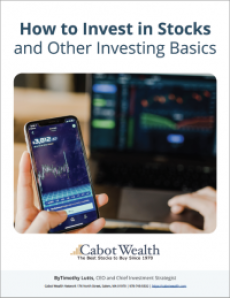While most investors hold winning stocks, every investor has loser stocks. It’s just a natural part of investing. This year, many widely held stocks have turned out to be losers. While mega-cap tech stocks have surged, over half of the stocks in the S&P 500 have posted negative returns year to date, and one in five have tumbled by 25% or more. Small-cap stocks almost across the board have had a rough year: the Russell 2000 small-cap index has declined almost 2%, with a broad swath of small-cap stocks sliding sharply.
But, rather than throwing in the towel and waiting for a fresh start next year, investors can look to convert this year’s losers into assets and winners.

Get My Free Report Now

Get My Free Report Now

Get My Free Report Now

Get My Free Report Now
One way that is available to taxable investors is to use their loser stocks to reduce their tax bills. Short-term capital gains are taxed as ordinary income, with rates as high as 37% at the federal level alone. Adding state taxes can raise the combined short-term capital gains tax rate to 47% or higher. Long-term capital gains tax rates are lower, but investors of course want to avoid paying taxes as much as possible.
So, investors can sell their loser stocks to generate realized capital losses, which can potentially shield some or all of these profits from taxes. Short-term losses, for positions held less than a year, can be netted against short-term gains, helping to reduce tax bills. Short-term losses can also be used to offset long-term gains in some circumstances. And, if combined losses exceed gains, they can be used to offset up to $3,000 of ordinary income, making losses a valuable asset. This asset can extend into future years, as realized losses that aren’t used in one year can be carried forward to future years.
Investors wanting to maintain a position in a particular stock or ETF will want to avoid getting tripped up by the 30-day wash sale rule which can invalidate the tax benefits of a capital loss. Surprisingly, cryptocurrency losses aren’t yet subject to the 30-day wash sale rule. Before making any tax-related trades, investors should consult with their qualified tax advisor to help ensure proper tax treatment.
Another way to capitalize on losers is by buying down-and-out shares that others have sold due to artificial year-end selling pressure.
Tax-motivated selling, as discussed earlier, is a major source of artificial selling pressure. Individual investors as well as professional advisors that manage taxable accounts are primary sources of tax-motivated selling. Surprisingly, mutual funds also make tax-related trades, as these funds distribute their capital gains to their shareholders around year’s end. Managers would rather avoid hitting investors with these taxable events, so they offset gains by selling losers.
Year’s end brings three other sources of artificial selling pressure. The first is window-dressing by professional investors. These managers want to avoid showing their clients and consultants that they held losers, so they sell these stocks to keep them out of year-end reports. This is particularly true in a year when many managers held previously touted stocks that went on to produce embarrassing and large losses. These managers have a strong career-driven motivation to sell these losers at any price.
Also, managers tend to chase performance as the year’s end approaches in order to maximize their performance-based annual bonuses. This means selling losers before they go down any further.
A third source is behavioral. Investors of all types tend to want to start the new year with a fresh perspective – so loser stocks are offloaded without regard to price.
Once the selling pressure fades around year’s end, many of the worst-performing stocks bounce upward, sometimes sharply. Nimble investors can capture some of the bounce before longer-term fundamentals return as primary drivers in late January or so.
Each year, the Cabot Turnaround Letter sorts through the market’s year-to-date losers to find the ones most likely to bounce sharply. Although our investing approach focuses on underlying business fundamentals and share valuation, we, too, can be tempted by the attractive risk/return trade-off that can come with year-end selling driven by artificial pressures.
Last year, all seven bounce stocks we recommended rose more than the S&P 500 through the end of January 2023. Four of these names, Match Group (MTCH), Meta Platforms (META), Walt Disney Company (DIS) and Paramount Global (PARA) increased by 25% or more in the first month of the year. While not every stock in every year of our articles does this well, our record has proven its worth over time.
We will be publishing this year’s bounce candidates in the December edition of the Cabot Turnaround Letter on November 29th. Consider adding our newsletter to your roster of investing sources.
As specialists in value investing, we focus on companies that trade at sizeable discounts to their underlying value. We do all the extensive analysis and valuation work to help you benefit from truly undervalued stocks. Our capabilities save you time while boosting your chances of profitable investing. Over the past three years, the portfolio of Buy-rated recommendations for the Cabot Turnaround Letter has generated a 16.3% annualized return compared to the 10.4% annualized return of the S&P 500, as compiled by the independent ratings organization Hulbert Ratings.





